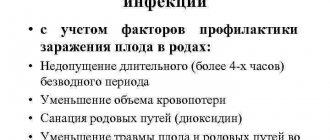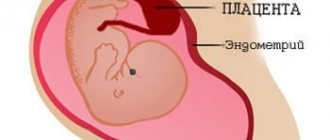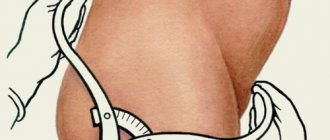Pregnancy is an amazing time, which is filled to overflowing with such different and contradictory feelings and emotions. There are happy expectations, and hopes, and anxieties, and fears, and joy. And how many myths exist around this topic! Of course, now no one takes seriously the belief that during pregnancy one should not cut hair, pet cats or crochet. But these were replaced by new beliefs. Which of them is true and which is a myth, helped us figure out midwife, childbirth preparation instructor at the Center for Children and Parents “Rozhdestvo”, perinatal psychologist Yulia Pavlova
.
Peace, peace and more peace!
It is believed that swimming, gym and cycling during pregnancy should be canceled and in general it is better to lie down more, especially in the last months of pregnancy.
“It’s really necessary to cancel cycling and strength training in the gym, but this does not mean that you need to lie down more,” says Yulia Pavlova. – In general, you can lead a normal life if the regime was more or less correct. But you definitely need to add walks in the fresh air and gentle gymnastics.”
According to the childbirth instructor, gymnastics is needed, in particular, to preserve the spine. After all, when the belly grows rapidly, the load on the lumbar region increases significantly. There is even a set of exercises specifically for pregnant women, which includes exercises for the spine and to strengthen the pelvic floor muscles. Swimming in the pool is also beneficial. Yoga is also good for pregnant women.
By the way, homework is also useful if it does not involve lifting weights, but forces you to bend and stretch. For example, it is useful to wash the floor with your hands! And if you have been doing gymnastics all the time, then this will not seem such a difficult task.
They say that swearing is the cause of birthmarks in children.
Superstitions related to birthmarks exist in many countries and religions. Somewhere they are considered marks from past lives, somewhere they are considered a lucky sign. In China, they believe that the shape of a birthmark can tell you a lot about a person’s character. In Russia, however, they say that the cause of birthmarks is swearing during pregnancy.
Of course, this superstition has nothing to do with science. However, if we consider swearing as an indicator of stress, then it is really harmful for mother and child. Which means it’s better to slow down.
Pregnancy is not a disease, so we live as we lived
A point of view opposite to the first one also exists in society. Its supporters believe that there is no need to change anything at all: we live as we lived.
“Pregnancy, of course, is not a disease,” says Yulia Pavlova. – But you need to lead a gentle lifestyle: not work from morning to night, but also devote time to walks and proper rest. A pregnant woman should have a healthy daily routine. And nutrition must change, especially if it was not correct. After all, there are foods that pregnant women absolutely need to eat, but there are also those that are best avoided. Not to mention bad habits, which include not only alcohol and smoking, but also sitting at the computer for many hours.”
There are financial incentives for pregnancy
The population of Russia is decreasing. In response, the government is trying to stimulate the birth rate with financial “aphrodisiacs.” According to Bloomberg, Russia planned to spend $8.6 billion in 2020 to encourage families to give birth, which includes mortgage subsidies and payments to new or growing families.
After registering, a pregnant woman receives about $11 from the state, but parents receive additional money for the birth of their second and third children.
During pregnancy, a woman becomes stupid and her character deteriorates.
“The woman’s condition can probably be described in these words,” laughs the childbirth instructor. “This happens because the hormone progesterone released during pregnancy affects the neocortex, the part of the brain that is responsible for human thinking and emotions.”
However, the character deteriorates only in the sense that the woman becomes more emotional, for example, she may cry in a situation that she would not have previously considered worthy of attention. Therefore, during this period, a woman needs to be treated more carefully and patiently, with the understanding that her condition is determined by biochemistry, and she cannot do anything about it. As a consolation, we can say that this is a temporary phenomenon, and not everyone has it so clearly manifested.
But it was during this period that many women discovered hidden talents that they didn’t even suspect about. Some begin to write poetry, sing or draw amazing pictures.
Buying clothes for an unborn child is a bad sign
Shopping for all those tiny little booties and the cutest clothes is usually a lot of fun for expectant mothers. But not in Russia, where buying clothes for a baby before birth is considered a bad omen.
This folk wisdom is not limited to the inhabitants of Russia (in fact, it is very common in many Asian countries) - and its origins are by no means meaningless. Such beliefs arose at a time when medicine was still poorly developed, and pregnancy and childbirth were fraught with many complications. Both were risky, so mothers really had to rely on luck.
All doctors are reinsurers, and antenatal clinics are evil
This point of view has appeared in recent decades, after natural pregnancy and home births became fashionable. However, even those specialists who prepare pregnant women for home birth do not advise avoiding antenatal consultations.
“There is a difference between doctor and doctor,” says Yulia Pavlova. – It is necessary to attend a antenatal clinic, if only for the sake of getting tested and monitored in a timely manner. But the recommendations of doctors can be questioned. It is best to have the additional opportunity to consult with a doctor who is focused on the most careful, drug-free management of pregnancy and an individual approach.”
According to the childbirth preparation instructor, in our antenatal clinics there are sometimes doctors who do not always give adequate prescriptions. For example, as a preventative measure, many pregnant women are prescribed the drugs “Duphaston” or “Utrozhestan”. They are prescribed to everyone: women over 35 years old, and those who have previously had a miscarriage, and those who have increased uterine tone. These are hormones, and in most cases this prescription is not justified. Everyone is also prescribed Magnesium B6, which not every woman needs. And in the third trimester, the craze among doctors at antenatal clinics is to prescribe “chimes” to support cardiovascular activity. Meanwhile, there are very good natural substitutes for this drug.
“It’s best to listen to everything, write it down, and with the results of the examinations obtained in the consultation, go for additional advice with the doctor you trust,” says Yulia. - How to find him? Either on the recommendation of friends and relatives, or through courses for pregnant women, since it is there that they have accumulated a lot of experience in managing a wide variety of pregnancies. They figured out a long time ago which clinics and medical centers implement which approach and which worthy doctors are available.”
Of course, we are not talking about courses for pregnant women at antenatal clinics. We need to look for alternative courses, best of all, again through recommendations, through friends.
Asian and African buffalo, 300 - 345 days
Asian buffaloes breed regardless of the time of year, African buffaloes breed exclusively during the rainy season. Pregnancy lasts 10–11 months.
African and Asian buffalo (newborn) differ in color, the first is black, the second is yellow-brown. Their weight ranges from 40 to 60 kilograms.
Usually one individual is born at a time. A few minutes after giving birth, the buffalo can follow its mother. The female feeds her cub for up to 6 – 9 months.
A healthy woman can give birth at home
Home births do exist. This is no longer a secret. “But you need to seriously prepare for home birth: both psychologically and physiologically,” says Yulia Pavlova. “Only a qualified specialist who has complete information about the woman’s health and how her pregnancy went can assess whether a woman can give birth at home.”
Therefore, it is not enough to assess your health on your own; you need to collect a complete medical history and consult with the specialist who will deliver the baby at home. Sometimes the woman herself says that she feels great, but, for example, she has low hemoglobin. This means that her condition requires adjustment. Not to mention other, more complex deviations from the norm.
For nine months, forget about cutting your hair.
For many women, nine months of pregnancy is an invaluable opportunity to take care of themselves. This is a great time to pamper yourself - and perhaps your last chance to look amazing before nursing clothes and bags under your eyes become your constant companions.
However, when it comes to hair, expectant mothers in Russia are advised to stay away from hairdressers. Yes, yes, you understood correctly: any haircuts are prohibited. Superstition says that by cutting a woman's hair, she increases the risk of premature birth. Considering that pregnancy already affects hair in unpredictable ways, giving up a hairdresser for nine months is a pretty sad prospect.
The whole process is accompanied by very severe pain
According to midwife Yulia Pavlova, it depends on how much the woman understands what she should do at any given time.
“Yes, we all know that giving birth hurts,” she says. – How else should nature give us a sufficiently noticeable signal that cannot be ignored, if not through pain? If the woman did not receive this signal, then she would not know at all that she was giving birth, and would not have prepared for it in the best possible way: she could give birth anywhere, literally on the go.”
In addition, during childbirth, endorphins are released, which are painkillers sufficient to prevent the woman from experiencing painful shock. Therefore, the pain during childbirth is always exactly what a woman can endure; she never goes beyond this line. And then there are already pain relief techniques: proper breathing, correct postures, relaxation techniques, acupressure and much more, which allows a woman during the birth process to keep this pain in check and prevent it from growing excessively. It is better to learn these techniques. You can, of course, give birth without this, but how painful it will be largely depends on the woman’s behavior.
How to turn your baby into the correct position for birth
The midwife arrived with a huge bag of all her bells and whistles. She looked at our progress: dilation was 1 cm. She explained that the baby was lying down unevenly: her back was not in the middle, but on the side, her heels were pushing to the other side, and she was not pressing with the top of her head, as it should, but with part of her forehead. That's why there were such strong contractions with such minimal progress. But at least the neck has softened well.
She began to shake the baby back out of the pelvic bones in order to place it correctly. To begin with, she took out from her bag a model of the pelvic bones, a model of a baby (like in courses for pregnant women, only small ones), showed how her daughter was lying now, and how she should stand up so that the bones of the skull would fit together well and slide through. She told us to visualize and talk to the little one so that she would turn correctly.
In the meantime, she put me on all fours, but low on my elbows so that my butt stuck out high. She placed a large scarf under her hips and began to move and shake the scarf so that the small head came out of the bones. Then I rocked my hip joints in different ways. I read about this method - it is widely used in Mexico and South America, so I was not surprised.
Then she turned me over, asked my husband to throw my legs over his shoulders somehow asymmetrically, and during several contractions lift me at her command, apparently to change the angle of position in the uterus. For a snack, I also did acupuncture on my ankles and told me not to lie in the pool for now, but to walk more, or better yet, on the steps, because... Climbing the steps lowers the baby into the pelvis as correctly as possible.
During childbirth, a woman is helpless and does not decide anything on her own.
During childbirth, it is really difficult for a woman to evaluate how correctly doctors are doing. The doctor has the right to act as he considers most correct. But still, we should not forget about the Hippocratic oath and that no doctor will harm either you or your child. But how much the whole process will coincide with your ideas and desires is really a question.
“If you want your wishes to be taken into account in the maternity hospital, you need to specifically look for such a maternity hospital,” says Yulia Pavlova. – In Moscow and the Moscow region they definitely exist, and there are several of them. A woman should arrive in advance and talk with the doctor who will deliver her baby. In this conversation, she should directly state what she wants and ask what the rules of the maternity hospital are.”
For example, she wants to do without stimulation and pain relief, so that her husband can be present at the birth, or so that he can come to the ward after the birth. And also that her child should not receive any vaccinations. In some maternity hospitals this is possible, in others almost none of this is allowed.
“It’s very difficult to argue with a doctor during childbirth,” says the midwife. “Because the “you need to do this or you’ll lose the baby” argument applies to everyone. A woman should be sure in advance that she will be taken into account, and that the doctors themselves will not offer anything extra for a natural birth. When you sign a contract, you need to find out everything, since each maternity hospital is like a separate state. And we will have to accept the rules that exist there.”
According to Yulia, even expensive maternity hospitals are not a guarantee that they will meet you halfway. Yes, they will smile at you and spin around in front of you, but they will do everything as is customary for them, and they will explain to you in detail that in your case it was impossible to do otherwise and everything was done for your own good.
“This doesn’t mean you have to give birth at home,” says the midwife, “but you need to be very meticulous about finding out what you can and can’t count on, and asking a lot of questions to demonstrate that you know what you want. And for this, of course, you really have to be prepared and know this.”
How to prepare the perineum for childbirth: a magic simulator
I’ll also share useful things that my midwife discovered for me: a vaginal trainer and whistles for childbirth (I’ll write about whistles in the process). Both things, as far as I know, are unknown in Russia, but they seemed simply magical to me.
A simulator is a device like a pressure meter. You can use it after the 36th week by inserting the expanding part into yourself, inflating it more and more each time (the recommended schedule is attached) and, without deflating, try to “pull it out”. This is an absolutely brilliant thing, because... It’s hard to think of another way to practice giving birth in a calm environment. I tried it for the first time, and immediately, like a flash, the sensations and memories of how my first daughter crawled out for me flashed by.
As a result of hard work, I reached a diameter of 8 centimeters by the date of birth, i.e. almost to the size of a child’s head, and also tried to push in all positions and angles to understand how it was more comfortable for me. In the end, as I thought, all more or less vertical positions suited me better than lying down. The midwife said that during labor, hormones will make the tissues more elastic, and an additional 2-3 cm will not be a problem. And she recommended giving birth in a position on all fours, with the upper part of the body raised, such as the elbows and chest lying on something higher than the knees. I also didn’t forget about the perineal massage with oil: it helped me not to tear the first time, and I hoped for the second.
The midwife advised in the last 2 weeks to eat vegetables high in vitamin K: broccoli, green beans, green leaves, spinach, because. this vitamin prevents blood loss in mother and child. I tried, and indeed none of us suffered from anemia, and also the lochia after childbirth ended faster than the first time.
Everyone gets fat during and after pregnancy
No, that's not true. On the contrary, pregnancy does not promote weight gain. And the hormones that are released during pregnancy rejuvenate a woman. She is thriving, and many are also losing weight. Of course, it is important to eat right. Completely, providing the body with all the necessary substances, but in volume no more than before.
Of course, if a woman has a metabolic disorder, she can get better even with the most proper nutrition. Weight gain also often occurs from overwork. Therefore, it is necessary to ensure proper postpartum recovery. After giving birth, you should definitely rest, and not take on the entire burden of household chores on the second day after giving birth. And if a woman goes through the recovery period after pregnancy correctly, she will not recover. There will be no weight gain.
Mothers are entitled to three years of maternity leave
Some views on pregnancy and childbirth in Russia may, to be honest, seem outdated. But when it comes to maternity and parental leave, this country is extremely progressive.
Not only does a woman's job remain hers for up to three years, but working mothers are entitled to 140 days of maternity leave, fully paid at 100 percent of their salary (not really - editor's note). Such paid leave begins 70 days before the expected date of birth and continues for another 70 days after it. By comparison, the US only provides mothers with 12 weeks of unpaid leave.
For stretch marks you need a special cream
“A balanced, proper diet helps with stretch marks so that all the necessary substances are supplied to the skin,” says Yulia. – The skin is nourished 90% from the blood, and only 10% of the substances can be replenished externally. To prevent stretch marks, your diet must include a sufficient amount of vitamin E, which makes the skin elastic. And on the outside you don’t need any expensive cream. It’s enough to use natural oils, especially if the skin is a little dry.”
But it is wrong to think that a synthetic complex of vitamins for pregnant women solves all problems, reminds a childbirth preparation instructor. Moreover, these synthetic vitamins should not be used if it is possible to ensure that all vitamins are supplied in their natural form through food. And even if you use a complex of vitamins, it is not synthetic, but natural. For example, all the necessary substances are present in their natural form in such a beekeeping product as bee bread. Good, full-fledged beebread must certainly be in honey, and not in powder. Sometimes bee bread is also sold under the name “bread”; this is also a high-quality, good product.
By the way, cosmetics used by a pregnant woman should not contain vitamin A. Pregnant women generally need to handle this vitamin very carefully, since scientists have found that its excess can negatively affect the development of the fetus.
Do you look unwell? You'll probably have a girl
Pregnancy takes its toll on the body: not every expectant mother looks or feels great. In this regard, there is another superstition that explains acne and lifeless hair: you may be pregnant with a girl.
According to this sign, girls “steal” their mother’s beauty, which is why pregnant women do not look their best. Science does not support this superstition and explains changes in appearance by hormonal surges. However, the belief is still tenacious.
Depression usually sets in after childbirth
Indeed, there is such a thing as “postpartum depression,” and there is a percentage of women who experience it after childbirth. But if the recovery period is carried out correctly, then no depression is observed. After childbirth, a woman needs psychological support from loved ones and normal rest. If for the first 40 days after giving birth someone close to you takes on all the housework, and the woman can only immerse herself in motherhood and caring for the baby, then there will be no depression.
The young mother also needs psychological and informational preparation. If she is prepared in advance for the fact that her life will change, and she finds charm and joy in this, then where will depression come from? It is also important that the young mother is prepared and knows how to cope with new worries and what to do at each moment. If she understands why the child is screaming, knows how to react, and generally consciously and confidently goes through the first stage of life with the baby, then there will be no depression. And you need to learn this in advance: read the relevant literature, know which specialists the mother can turn to for advice during the day and even at night. Then all the first doubts will be quickly resolved, and the young mother will be confident and balanced, immersed in happy motherhood without worries and fears.
How we decided to have a home birth
During the course, she advised us to write a “birth plan” and discuss it with your doctor. There are even all sorts of interactive forms for this on the Internet. Our midwife took this very seriously: she discussed the plan with us, brought it with her to the birth, and then a couple of days later she reviewed it with us to see if she had missed anything from our wishes.
By the way, a very useful thing, even for hospital births. In many countries, this is an official document: there you can register allergies or contraindications, or that you do not agree to some procedures such as bladder puncture, perineal incision, or in what cases you agree to what. We stated that we didn’t want to cut the umbilical cord at all, let it fall off on its own, that under no circumstances would I be allowed to be cut, it would be better if it breaks on its own, don’t do any vaccinations, etc.
At some point during all this preparation, we realized that we felt confident and well prepared, and we worked through and discussed our fears about childbirth. They even made joint drawings with the whole family of the baby being born (which, by the way, surprisingly coincided with reality).
Then we realized that somehow it was no longer attractive to trudge 20 minutes even to this wonderful house for childbirth, but the pool really attracted me. Since my first pregnancy I dreamed of giving birth in water - how can I not take advantage of it now! And then the midwife offered to bring him to us, he’s inflatable. And this decided the issue in favor of home birth, and if anything happens, a hospital 2 km from us. And the midwife has accreditation that she can bring a woman in labor in the event of some kind of emergency situation, if she cannot cope on her own, and all her documents on pregnancy management are accepted there perfectly.
She brought the pool in advance, about 3 weeks in advance, so we practiced inflating it, checked how long it takes to fill it, whether the hoses fit, and even did a test swim with my daughter. The whole family could fit there: 1.2 x 1.4 m and a depth of about a meter. It comes with a special disposable sterile coating, beauty!
Badger, 400 - 450 days
The breeding season is from February to October. Pregnancy lasts up to 450 days (15 months). The number of cubs is from one to four, the weight of a newborn badger does not exceed 80 grams.
For the first five weeks they are absolutely helpless. Only at the age of 35 - 40 days do badger cubs open their eyes. They feed on breast milk for four months, although at three months they are able to eat other foods. Little badgers spend their first hibernation with their mother.
Interesting fact: Badgers prepare in advance for the birth of their offspring. They live in burrows and make special nests - a kind of children's rooms. Animals line them with dry grass. When the offspring grows up, they dig another hole.
Arithmetic of the break between two pregnancies
Break for a pregnancy that ends in natural birth According to obstetricians-gynecologists, the optimal break between pregnancies, if the previous one ended in spontaneous birth, is 2–2.5 years. The following are taken into account:
- 1 year – feeding the child with breast milk;
- 9 months – restoration of a woman’s body after a period of breastfeeding.
However, in order to minimize possible difficulties during a subsequent pregnancy, it is advisable to take an additional pause of another 6 months. Thus, the ideal gap between the births of children will be 2.5 years.
A break for a pregnancy that ended with a cesarean section. If the previous pregnancy ended in birth by cesarean section, then it is important for parents not to attempt to conceive the next baby for 3 years. During this time, the scar remaining on the uterus after the operation should form and “get stronger.” After all, there are cases when the place of attachment of the fertilized egg was precisely in the area of the postoperative scar. As the uterus grows during pregnancy, the “frail” scar may become thinner and even break apart from the load, which will adversely affect the course of pregnancy and the health of the fetus.
To minimize potential threats to the course of another pregnancy, women who have undergone a cesarean section are recommended to undergo an ultrasound of the uterus before choosing the optimal time for conception, during which the doctor will assess the condition of the postoperative scar on it.








